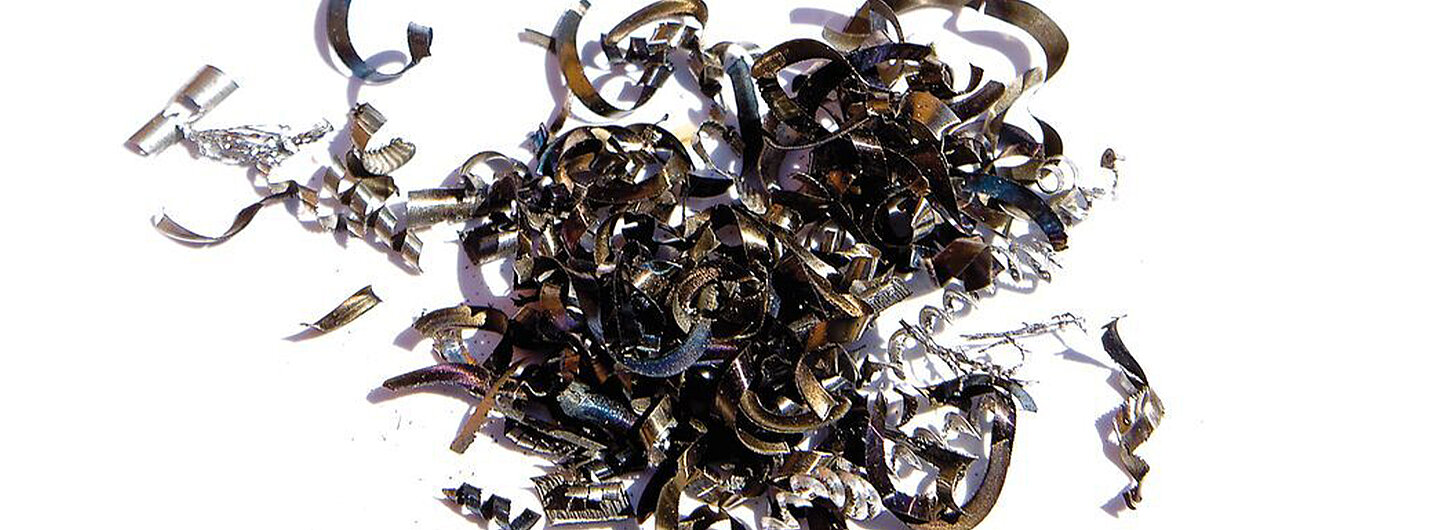In most cases, they are not present in pure form, but in combination with cooling lubricants, cutting oils, etc., i.e. as a mixture of solid and liquid components.
Task: Separation of solid and liquid components
This means that in addition to extracting the chips from the working area of the machine tool, there is another task to be performed: separating the solid and liquid components. There are chip extractors for precisely this task.
When the suctioned material enters the vacuum cleaner, the (wetted) chips are first collected in a chip basket. They can then be recycled as valuable secondary raw materials without "downcycling". The liquid portion is collected in a generously dimensioned container, which therefore rarely needs to be emptied. The liquids can then be disposed of or recycled.
The liquid container is emptied by gravity or via a pump, which can be operated simultaneously with the suction operation or alternately. The air fractions are cleaned in the vacuum cleaner via a filter before they are released into the atmosphere.
Both fractions can be recycled
This keeps the working area of the machine clean and both fractions can be recycled. This concept has proven itself in the metalworking industry for many years. Ruwac offers the chip vacuum cleaners with different motor outputs. They are also suitable for vacuuming large quantities with a small proportion of liquid and for vacuuming heavy chips and, in the three-phase versions, as "continuous runners" on machining centres with pump-down control.
For light metal machining: chip extractor in Ex version
If light metals are being machined (which is becoming increasingly common), chip extractors in a dust Ex version (zone 22) are used. With these, the chips first hit a stainless steel baffle plate, which absorbs the kinetic energy and does not form sparks on metal-to-metal contact. In general, it is ensured that no sparks are produced during operation of the vacuum cleaner that could trigger a dust explosion and that the surface temperatures of the appliance do not exceed defined values. This is of crucial importance because light metal dusts (in a certain concentration with atmospheric oxygen) are flammable. A degassing valve prevents the accumulation of explosive gases in the vacuum cleaner.
This provides a simple answer to the question posed at the beginning. Chips are vacuumed with a chip vacuum cleaner.
